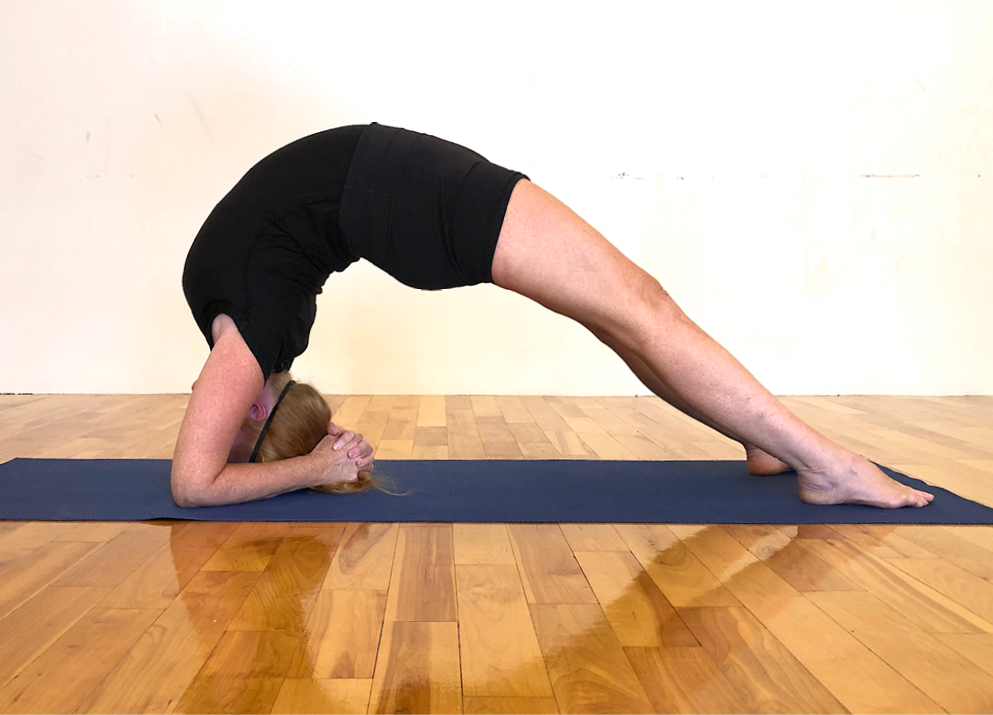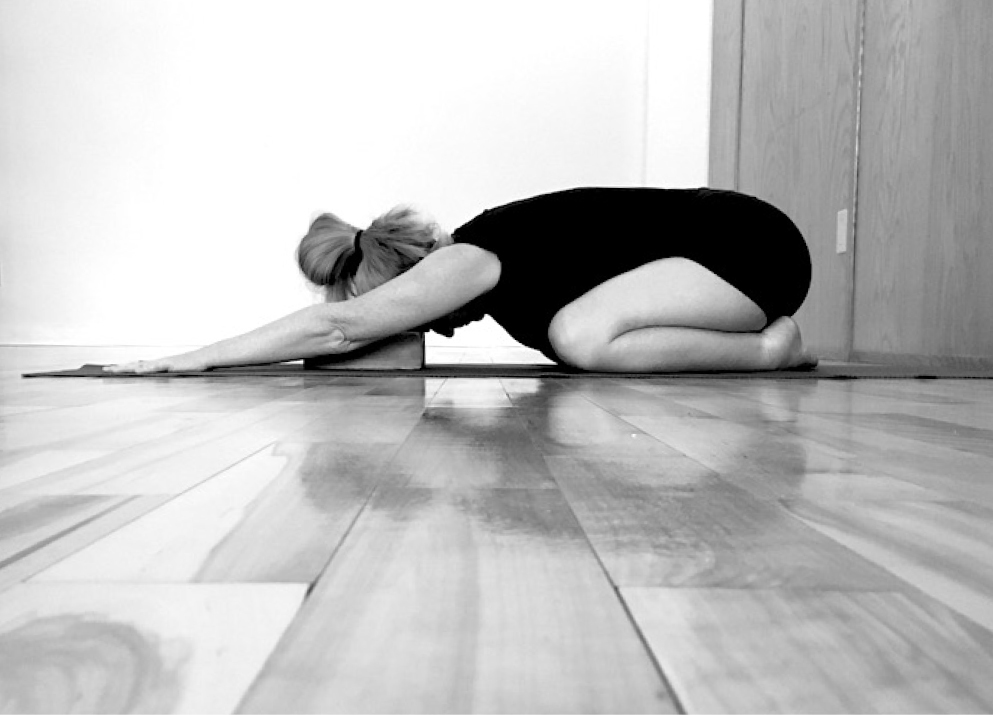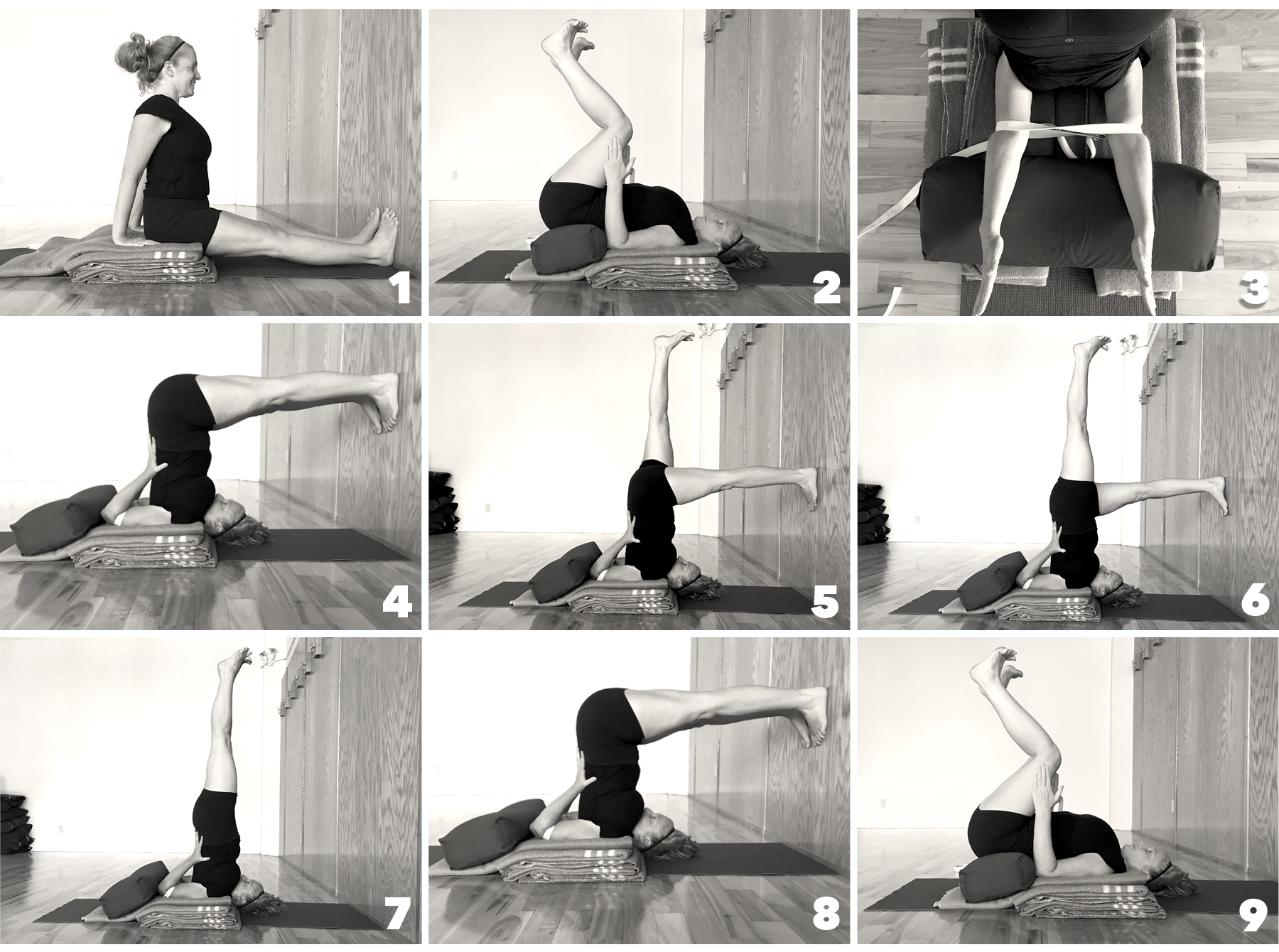Yoga Corner: Sequence
Step-By-Step Sarvangasana and Halasana Sequence (Variation)

Photo 1: Set-Up: Place at least 4 properly folded blankets on top of each other (the rounded fold towards the front of the mat) and approximately a blocks-width away from the wall. Be sure that the surface of the blankets is large enough to fit elbows, upper arms and top of shoulders.
Place a chair facing the wall, at the front of the mat, in preparation for Halasana support.
Photo 2: Lie down on your back with the legs bent and place the buttocks and feet against the wall. With properly placed blankets, the top of the shoulders should be a few inches from the edge of the blankets, C-7 just on the edge/off of the blankets and the back of the head on the floor. If shoulders slide off of the blankets,come out of the pose and move the blankets a few inches further from the wall until the measurement works for you.
Photo 3: Place a belt (to hold the arms shoulder-width apart) just above the elbow joint. Loop the belt around one elbow in preparation (Photo 2). Keeping the legs bent; place the feet on the wall in a Tadasana stance hip with apart. Align the little toes slightly in (toward the midline) from the outer heels. Pressing strongly into all for corners of the feet, lift the pelvis up towards a modified version of Sarvangasana. Then put the other elbow into the belt. Press the arms down into the blankets and the hands towards the wall and floor to help lift the spine, shoulder blades and pelvis upwards.
Photo 4: Support the kidneys with your hands (fingers pointing up, not touching the spine). (If the impulse is to lift the spine with the hands, try increasing the number of blankets under the shoulders.) Breathing easily, continue to press all 4 corners of the feet into the wall, lift the tailbone toward the ceiling to lengthen the spine and lift the pelvis even more. Squeeze an imaginary block at the lower inner thighs, just above the knees, to keep the inner thighs moving towards one another and then internally rotate the upper inner thighs towards the wall.
Photo 5: Keep the left leg bent with the foot stable in the wall, then lift the right leg up (working towards full Sarvangasana). The lifted leg is extending fully out of the pelvis as well as internally rotating. Work to keep the ankle, knee, hip and top shoulder of the right side in one line as well as the hip and top shoulder of the left side in line.
Photo 6: Lower the right leg back to the starting position, then lift the left leg, using the same actions and alignment as in photo 5.
Photo 7: When ready, bring both legs up into full Sarvangasana. Be sure legs are fully extended and internally rotated; ankles, knees, hips and top shoulders in line.
Photo 8: Bending at the hips, lower the legs and place your toes on the chair behind you to enjoy Halasana. In Halasana, lift the pelvis upward to lengthen the spine. Then from the back of the pelvis extend the legs fully and continue maintaining the leg actions of adducting and internally rotating.
Photo 9: Come back to the modified version of Sarvangasana with the legs bent and the feet against the wall. Begin to lower the pelvis, remove the belt, and gently roll down to the floor.
Practice notes:
Start in Modified Sarvangasana for 15 breaths, then right leg up 15 breaths, then left leg up 15 breaths, then both legs up in full Sarvangasana 15 breaths, then Halasana with feet on the chair for 15 breaths. Once this is managed without strain, work up to 30 breaths in each position. When these postures can be held for 30 breaths you will be ready to hold both Sarvangasana and Halasana for more than 5 minutes at a time, which is ideal to gain the many benefits of these poses.
Prepared and demonstrated by Donna Read
Donna would like to express gratitude to her teacher, Hart Lazer and to his teachers for their inspiration and wisdom.











